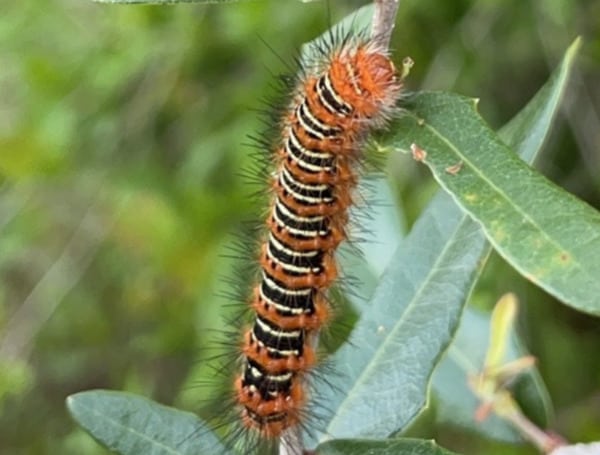Florida is full of caterpillars this month. But what are they and what can you do about them? Are they dangerous?
Fast facts from University of Florida Institute of Food and Agricultural Sciences Extension agent Jackie Lebouitz:
- Some common caterpillars are the tussock moth , the echo moth, oak leaf-roller and the woolly gray moth.
- Most are not poisonous, but some have sticky hairs that are itchy if touched. The echo moth caterpillar can be toxic if eaten.
- They do not harm property but can be a visual nuisance.
- Caterpillars are important for the local ecosystem and provide food for birds and bats.
One of the most commonly spotted caterpillars is the tussock moth, a yellow-and-black insect covered with spiked hairs, which is commonly found on oak trees.
And yes, it does seem like they’re just about everywhere.
Read: UF/IFAS Scientists Launch Statewide Landscape Water Use Survey To Enhance Water Conservation Efforts
“They’re out now and there’s a lot of them. They tend to come out in large numbers,” said Lebouitz, Chemicals in the Environment agent with UF/IFAS Extension Sarasota County.
These caterpillars should be left alone unless you’re wearing gloves because the setae, or “hairs,” on the body can cause irritation when touched.
Other caterpillars that are out and about across the state include the echo moth and oak leaf-roller.
The oak leafroller, along with the woolly gray and other types of geometer moths, are often referred to as “inchworms,” Lebouitz said, but the echo moth caterpillar can be mildly toxic if eaten, so keep pets and small children from touching them.
Similar to the tussock moth caterpillar, the echo moth caterpillar has fine hairs that may cause minor dermatitis if touched without gloves for some sensitive individuals.
These caterpillars are coming out in force because it’s a normal part of spring, Lebouitz said. Part of it may be due to all the fresh, new growth of leaves.
They don’t cause considerable damage to the trees or any damage to the homes they crawl on, and they don’t bite.
“It’s very much a seasonal nuisance, and they aren’t really anything to worry about,” she said. “They’re an important part of the ecosystem. A lot of caterpillars are an important source of food. They have a place.”
Read: What’s Next For UF/IFAS Scientists On The Removal Of Burmese Pythons From The Florida Everglades?
Some caterpillars, like the woolly gray, oak leafroller, and tussock moth, will normally stay on trees, such as oaks, while they feed, but they may migrate onto cars and buildings, she said. Don’t be alarmed. They can’t cause any structural damage and won’t harm the paint on your car. You don’t need to use pesticide to remove them.
“The better call is if they’re coming in the home, just gently relocating them with a broom and dustpan, if possible,” she said.
When they form cocoons, they will hang on for a few weeks until they emerge as moths. The best bet, Lebouitz said, is to leave them alone and enjoy them as uniquely Floridian signs of spring.
“I always get really excited when I see them because, in Florida, it’s kind of hard to differentiate the seasons,” she said. “You have to appreciate those signs of subtlety that spring has arrived, and for me it’s one of those signs of spring.”
Help support the Tampa Free Press by making any small donation by clicking here.
Android Users, Click To Download The Tampa Free Press App And Never Miss A Story. Follow Us On Facebook and Twitter. Sign up for our free newsletter.

